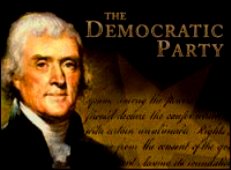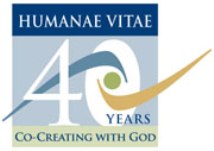The New English Translation of the Order of the Mass is now available.
This analysis is from the blog Vivificat and I truly commend it:
...the newly approved English translation of the Order of the Mass is now available on the website of the U.S. Conference of Catholic Bishops. In my view, this first revision of the unchanging parts of the Mass after 40 years goes a long way in addressing the rather informal and at times colloquial translation we've all been chafing under for decades. The new translation is much closer to the Latin standard edition and therefore, better conforming to the collective mind of the worshipping, universal Church.
The Liturgical Movement and the purpose of Vatican II liturgical reforms
The Mass in the vernacular language was a concession made by the Fathers of the Second Vatican Council who, guided by the Holy Spirit, wanted to make the liturgical treasures of the Church available and understandable to a wider audience, thereby ensuring the full and active participation of the People of God in the highest act of worship of the Catholic Church, the re-presentation of the one Sacrifice of Christ in Calvary, the offering of the "Lamb of God who takes away the sin of the world" in a renewed Paschal Feast, and the continuance of the Risen Christ's Real Presence in the heart of the Church.
Whether the post-Conciliar reforms achieved in whole or in part the wishes of the Council Fathers has been a matter of intense controversy ever since. The wanton, unauthorized adaptations, improvisations and changes made by self-declared liturgical reformers in search for "relevance" on one side, and the resistance to any change by traditionalists on the other, has for too long polarized the debate as to where the Liturgical Renewal should have gone after Vatican II. The false dilemma posed by "progressives" – for whom reforms have fallen short of some mythical democratic ideal – and "traditionalists" – for whom reforms have gone too far or were not needed at all – has led to collective confusion among the faithful and to a subsequent loss in the understanding of the purpose, means, and end of the Church's liturgical action.
The polarizing debate has led to unnecessarily competing visions of the Holy Mass. For example, some talk about the Mass exclusively as a Paschal Supper or Feast preferring to stress its "horizontal" dimension of fellowship and communion at the expense of its sacrificial character, or vice versa: some see the Mass solely as an action belonging almost exclusively to the priest-celebrant and altar ministers, where "full, active participation" is relegated to the realm of the passive and individual. The truth is that the Mass is all of this, sacrifice and feast, worship and communion, Presence and missio. The Mass is all of this and its reality does not exhaust any one meaning exclusively at the expense of another one.
Towards a liturgical hermeneutic of continuity
Since the inauguration of the pontificate of Benedict XVI we have seen a focused effort – which really started, tentatively at first but late in the pontificate of Paul VI, and with more vigor in that of John Paul the Great – to restore the original liturgical intent of the Fathers of Vatican II of fostering the full, active and conscious participation of all the faithful at Mass. Pope Benedict's liberalization of the so-called Tridentine Liturgy – now the extraordinary form of the Latin Rite – demonstrates the Sovereign Pontiff's desire that the Liturgical Movement validated by Vatican II proceeds in strict continuity with the venerable liturgy of the Church. All attempts to see the "New Mass" of Paul VI as a rupture with the past and as a field for impertinent experimentation should be rejected in favor of Pope Benedict's vision of extending his "hermeneutic of continuity" from the field of biblical exegesis into the Church's liturgical actions.
What that means to us, I believe, is that the way we worship at Mass today should take its cues from the extraordinary form as to, among other things, the right attitudes, recollection, respect, gestures, and solemnity of the liturgical action; whereas those who prefer to worship in the extraordinary form of the Holy Mass should find legitimate ways to make their participation one that is fully conscious and active in accordance to the intent of the Fathers of Vatican II. I believe that the Holy Father's intent is to have both forms influence each other beneficially, thereby restoring a continuity and balance that many on both sides of the liturgical debate considered lost.
Much remains to be done since too often also, the music, art, and architecture of the post-Conciliar Church has led to a practical forgetfulness of the Real Presence which our temples are meant to house and our hymns to honor. Sadly, too many of our temples have become mere auditoriums or meeting halls and not places of prayer simply because the dwellers behave accordingly. Noise and loud conversations prevail at the expense of recollection and silence. The sacred arts should be the next objects of the Holy Father's restoration of the "exegesis of continuity."
A Holy Mass in true vernacular English
I see this new translation of the Order of the Mass as a great first step toward restoring theological sanity to our Liturgy. Mass "in the vernacular" does not mean Mass "in the colloquial." When we pray, we are praying not only as an isolated assembly but also with the great cloud of witnesses, martyrs, and saints, canonized and not, who also become present every time unto us whenever we witness Christ's Sacrifice in the Mass.
The Mass should have its own liturgical language that, through beauty, rhythm and poetry highlights the solemnity of the liturgical action. Clearly, much remains to be done in terms of music, architecture, and church décor to restore our temples and sacred spaces into houses of prayer once again. God is not my "buddy" in heaven and our language should reflect that fundamental truth.
The Mass is not solely the action of isolated national churches and language groups. The Mass is the action of the entire Church and should reflect its universal character in its particular celebration. Therefore, no group can claim sole ownership of the vernacular language of the Mass since Mass in any language belongs to the common patrimony of the Universal Church.
An ideal opportunity for liturgical catechesis and formation
Priests and those of us in the liturgical assembly now face a new learning curve. Our communal dialogue with the Lord is going to change and, I am convinced, for the best. I find the objection to the new translation as the loss of the way we have prayed at Mass "for the last 40 years" silly. Those who wield this objection are generally the same people who once had little qualms in ditching wholesale the way we prayed for at least 400 years in favor of an English translation which was originally conceived to be as merely tentative and transitional. Bishops, priests, and the faithful will relearn to pray in a proper, liturgical language consonant to the Mind of the Church, given the proper catechesis. Hopefully, the changes will cascade into our hymns, songs, and sacred architecture.
The new translation of the Order of the Mass offers us a great opportunity for a renewed liturgical catechesis. We now have the opportunity to relearn what the Mass is all about. The USCCB has made available a treasure throve of information to support this catechetical effort. We should avail ourselves of all these aides. I humbly propose that we should engage in a serious effort at liturgical catechesis should be pursued in every parish and oratory.
Let us seize this providential moment to form a liturgical consciousness in our Catholic faithful, a consciousness both in continuity with out liturgical heritage and in true accord with the intent of the Fathers of the Second Vatican Council. Let us, then, come and worship the Lord, for we are his people, the flock that he shepherds (Psalm 95).
Sunday, August 10, 2008
New English Mass Translation
Subscribe to:
Post Comments (Atom)
This Catholic Loves Benedict XVI

Knights of Columbus: Champions for the Family

The Pro-Life Movement in the Democratic Party



































2 Comments:
Wow! Thank you for the link! I am adding you to my blogroll - if I hadn't done so already.
In Christ,
-Theo
Oh yeah, Eric! We are linked via FBook! Strange that I hadn't added your blog to my blogroll before. That has been corrected. But I know why...because I have a link to another "Sacramentum Vitae" blog and confused the two.
-Theo
Post a Comment